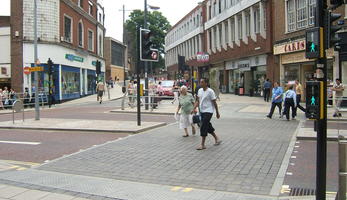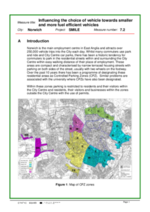Discounted parking for smaller and more fuel-efficient vehicles
Thematic areas
Demand & urban space management
- Access restrictions and management
- Road pricing
- Parking management and pricing
Summary
In an effort to promote the use of cleaner vehicles, Norwich introduced a new parking policy with concessions for cars running on clean fuels.
Implementing sustainable mobility
Prior to measure implementation, parking policy in Norwich made no distinction between different types of vehicle. The only concessions available were for drivers with impaired mobility. The purpose of this measure was to influence drivers’ choice of vehicle through a pricing and permit structure providing benefits for those opting for smaller, more fuel efficient cars and cars running on cleaner fuels.
Residents in a controlled parking zone were targeted in order to raise awareness, with the ultimate aim of improving the quality of the urban environment in terms of air quality and townscape.
Progress
Following information gathering and assessment, agreement was reached on the broad principles of the scheme, including changes to the pricing structure and to the criteria for issuing permits. Extensive consultations took place with residents and businesses in the controlled parking zones. In May 2008, the new pricing structure for residential permits in Norwich was introduced. The price of the annual permit differed according to vehicle length and permits were free for any vehicle operating on alternative fuel (electricity, propane or natural gas).
Outcomes
As the impact of the measure is likely to be long term (i.e. affecting motorists’ car purchasing choices), monitoring showed no significant change in car length since its introduction in 2008.
However, analysis of the relationships between car length, on-street parking capacity and emissions of CO2 demonstrates that a 10 percent reduction in average vehicle length would increase practical parking capacity in streets by over 10 percent. Even if all the freed space was used for parking by “new” vehicles there would still be a net reduction in CO2 emissions by almost 2 percent.









